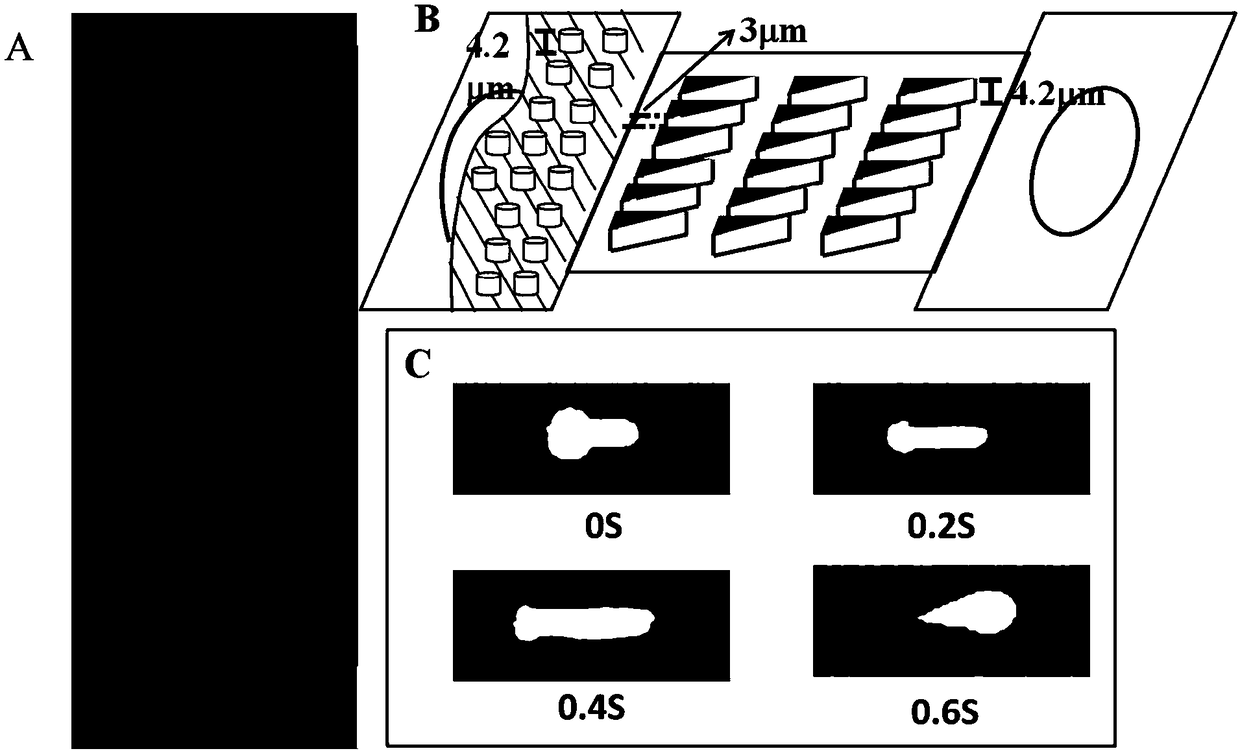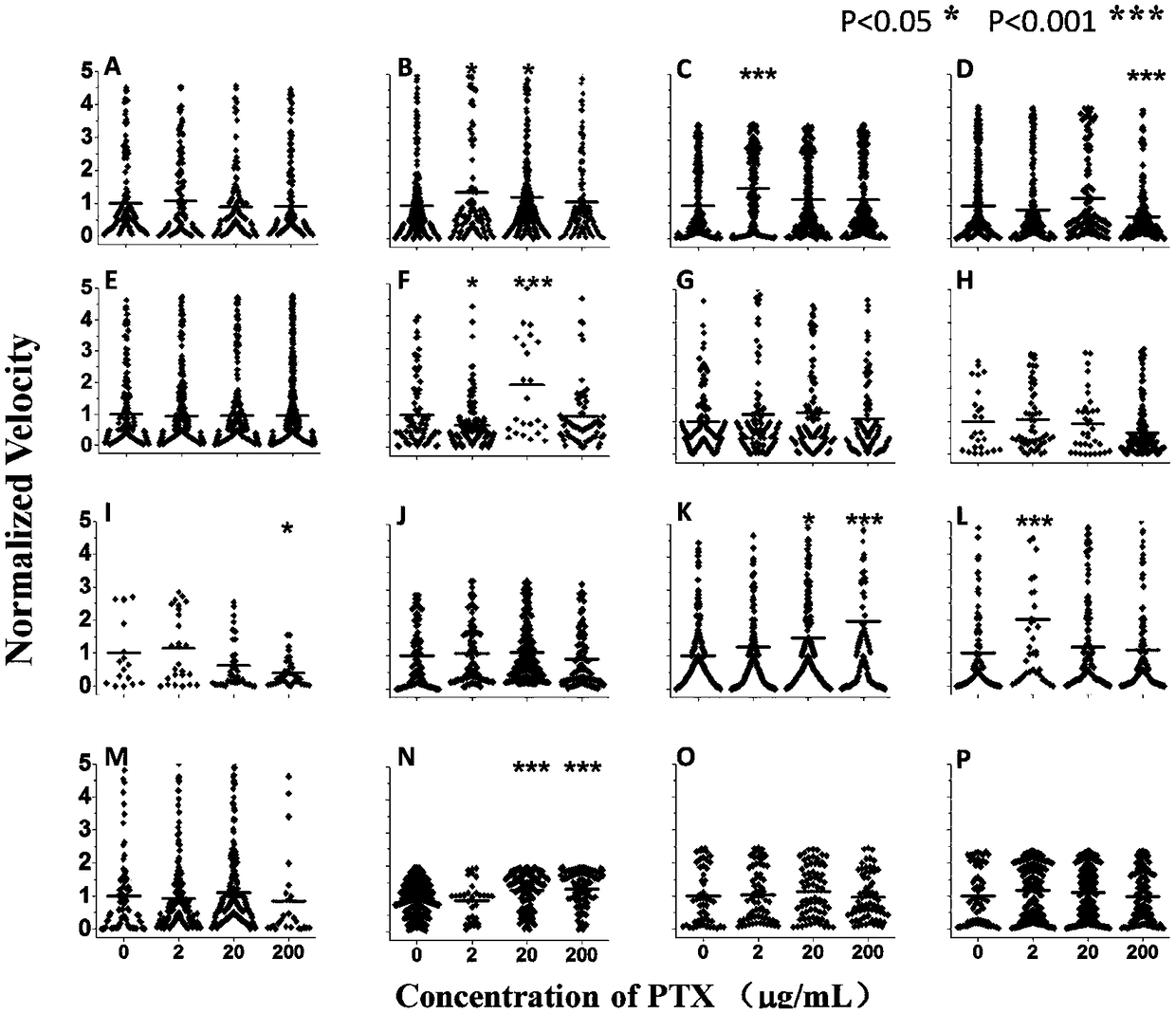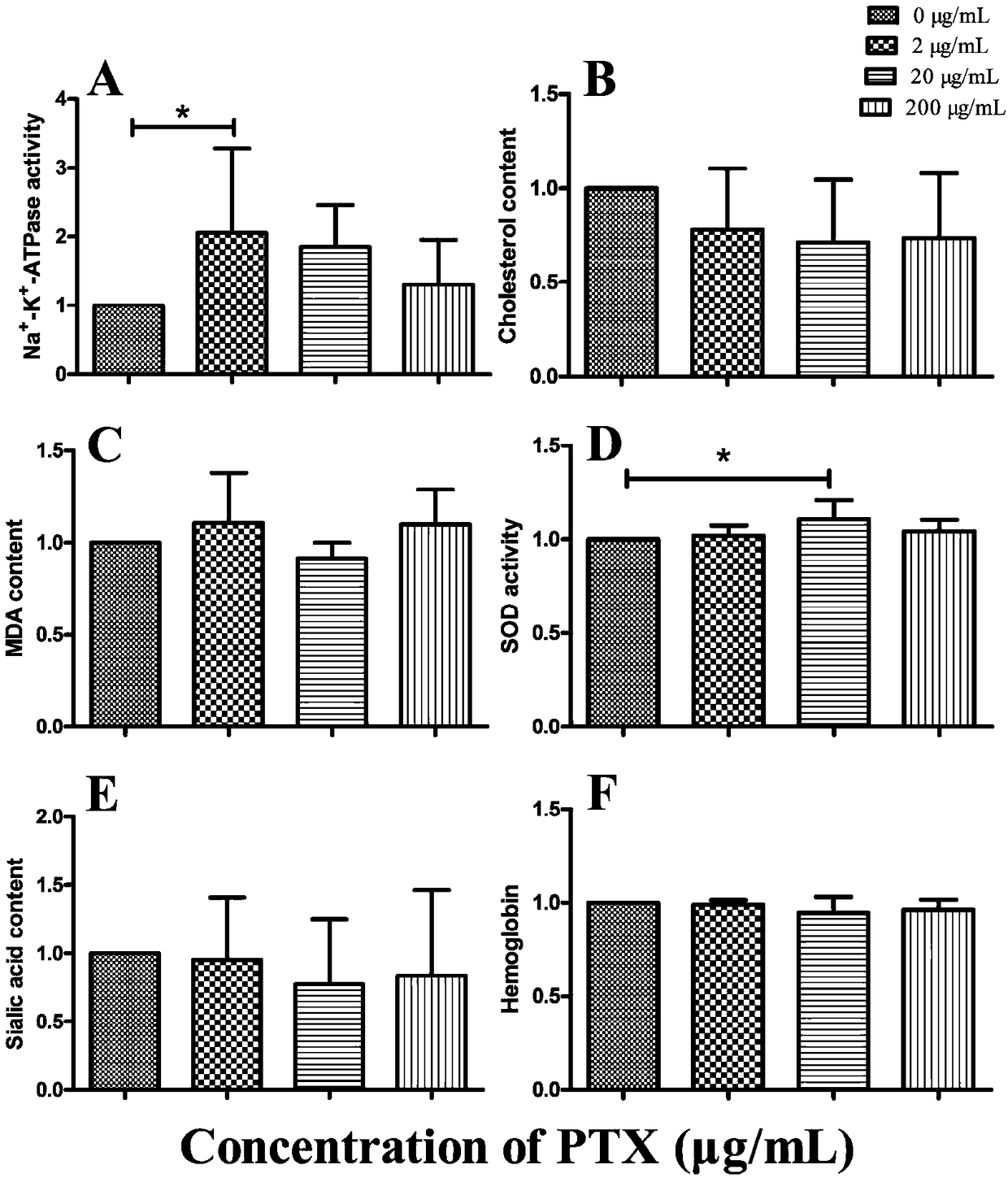Microfluidic chip-based detection of influence of pentoxifylline on erythrocyte deformability and biochemical indexes in patients with coronary heart disease
A microfluidic chip, pentoxifylline technology, applied in biological testing, material inspection products, testing moving fluid/granular solids, etc., to achieve the effect of easy operation, low sample consumption, and good portability
- Summary
- Abstract
- Description
- Claims
- Application Information
AI Technical Summary
Problems solved by technology
Method used
Image
Examples
Embodiment 1
[0057] Embodiment 1 Fabrication of microfluidic chip
[0058] Fabrication of microfluidic chips: using SU-8 photoresist and standard wet etching process to prepare PDMS microchannel templates on silicon wafers, and adopt casting method to prepare PDMS microchannel chips. The preparation method includes the following steps:
[0059] First, silanize the silicon wafer template with 25mL trimethylchlorosilane solution in a vacuum pump for 1 hour to prevent PDMS from sticking, and it is easier to tear off the PDMS glue, and clean it ultrasonically with acetone, ethanol and ultrapure water, and then blow it with nitrogen. Dry and dry. Then take PDMS and curing agent with a weight ratio of 10:1 and mix them well, put them in a vacuum desiccator to degas until the bubbles completely disappear, and then pour them slowly on the silicon wafer to avoid bubbles. Then it was cured on a heating plate at 95°C for 3 hours, and then the PDMS was peeled off from the silicon wafer, so that the m...
Embodiment 2
[0061] experimental method:
[0062] 1. Blood Sample Preparation
[0063] Blood samples were collected from the veins of patients with coronary heart disease, and the fresh blood was centrifuged at 300g for 3 minutes to remove the supernatant. Then it was equally divided into four parts and added to RPMI 1640 medium containing 20% fetal bovine serum (FBS), so that the final volume of RBC solution was 1%. Then, PTX was added to the RBC solution to make the final concentration of 0, 2, 20, and 200 μg / mL, and incubated at 37°C for 2 hours. After incubation, RBC samples were washed 3 times with RPMI solution containing 20% FBS to remove excess PTX, and then stored at 4°C for future use.
[0064] 2. Measurement of red blood cell deformability
[0065] Take 10 μL of red blood cells incubated with drug (PTX), mix them with DilC18(3) cell orange fluorescent dye with a final concentration of 10 μM, and incubate at 37°C for 15 minutes to stain the red blood cells. Red blood cell...
PUM
 Login to View More
Login to View More Abstract
Description
Claims
Application Information
 Login to View More
Login to View More - R&D
- Intellectual Property
- Life Sciences
- Materials
- Tech Scout
- Unparalleled Data Quality
- Higher Quality Content
- 60% Fewer Hallucinations
Browse by: Latest US Patents, China's latest patents, Technical Efficacy Thesaurus, Application Domain, Technology Topic, Popular Technical Reports.
© 2025 PatSnap. All rights reserved.Legal|Privacy policy|Modern Slavery Act Transparency Statement|Sitemap|About US| Contact US: help@patsnap.com



